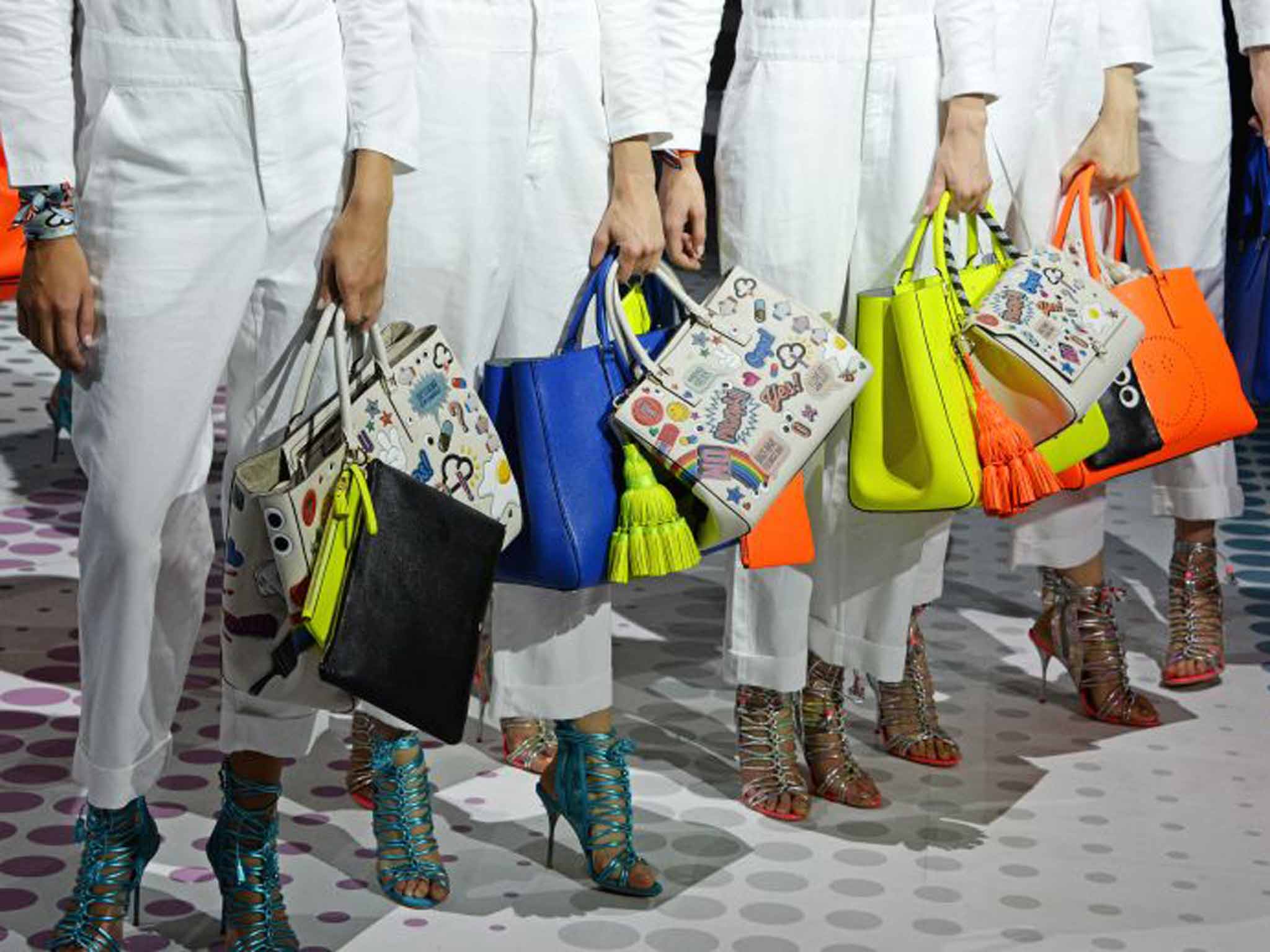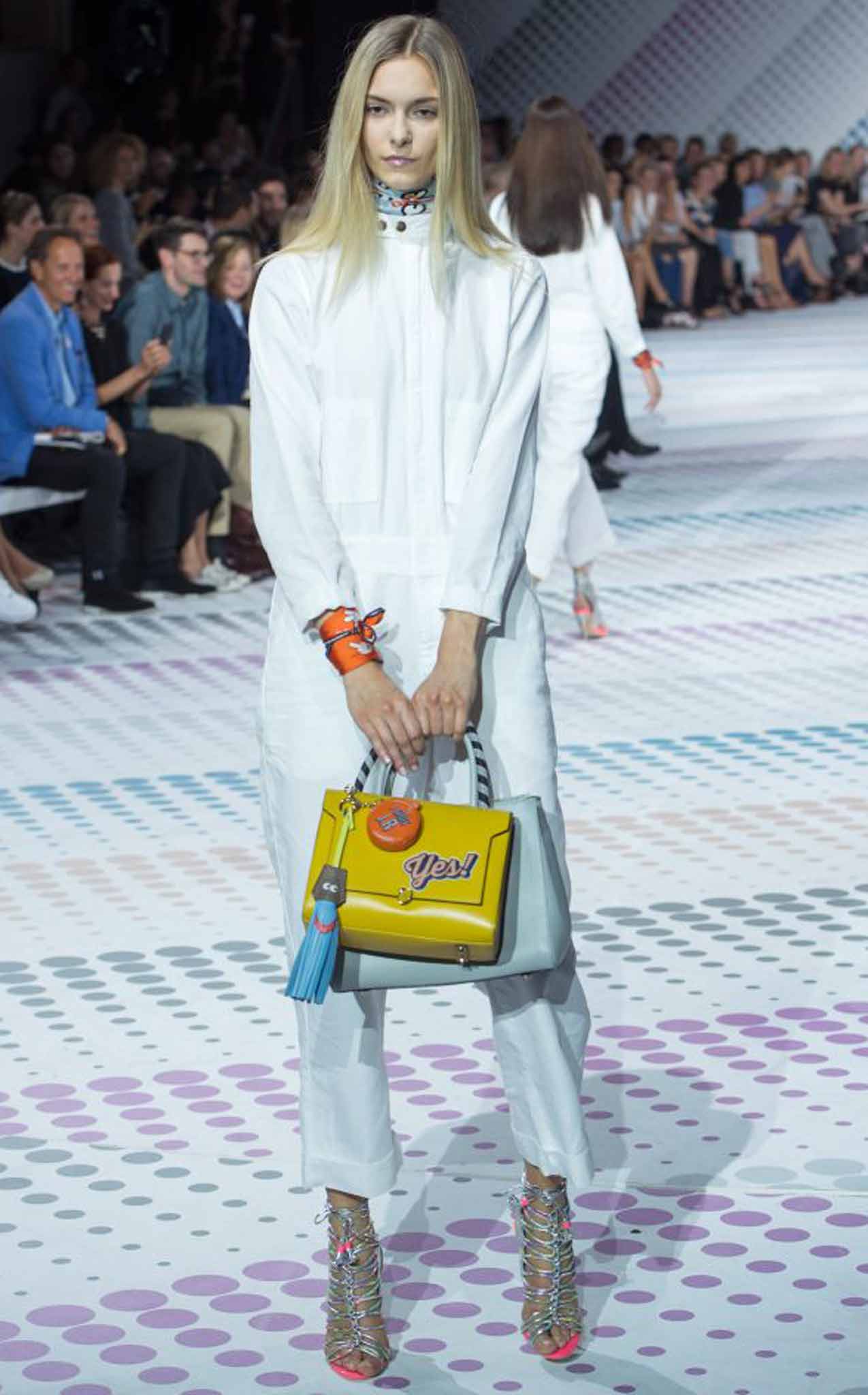Designers have branched out with small, but perfectly formed, treats for the Christmas tree
Perfume used to be the easy way to give the gift of glamour but times are changing

Your support helps us to tell the story
From reproductive rights to climate change to Big Tech, The Independent is on the ground when the story is developing. Whether it's investigating the financials of Elon Musk's pro-Trump PAC or producing our latest documentary, 'The A Word', which shines a light on the American women fighting for reproductive rights, we know how important it is to parse out the facts from the messaging.
At such a critical moment in US history, we need reporters on the ground. Your donation allows us to keep sending journalists to speak to both sides of the story.
The Independent is trusted by Americans across the entire political spectrum. And unlike many other quality news outlets, we choose not to lock Americans out of our reporting and analysis with paywalls. We believe quality journalism should be available to everyone, paid for by those who can afford it.
Your support makes all the difference.
For the lucky ones amoung us, Christmas stockings have long been stuffed with little slices of luxury: a tiny flacon of Chanel eau du parfum, the expensive heft of a Dior lipstick or perhaps the glistening gold of YSL's Touche Eclat. Visit a department store beauty hall at this time of year, and you'll notice that the fragrance department will have grown as if by magic, allowing retailers to stack their goods high in order to sell them … well, if not exactly cheap, then at least at a fraction of the prices their ready-to-wear commands. The market term is “entry level product”– meaning a cost-conscious way to buy into a designer brand. Beauty has been the primary means – and has proved lucrative, the market is worth an estimated £17 billion in the UK alone. But, for an increasingly fashion-literate customer, a lipstick or bottle of the same old designer eau de toilette isn't quite enough to satisfy.
While fragrance was once seen as an all-powerful licence to print money, the market is actually in decline: Coty, the manufacturer of scent for designer houses including Marc Jacobs, Bottega Veneta and Chloé reported last month that its perfume sales had fallen by 8 per cent. It seems that customers are crossing the floor and leaving the beauty hall, finding a warm welcome in the accessories department instead.
Leather goods have been the lifeblood of many a luxury brand – while most shoppers would bristle at paying four figures for a single item of clothing, a bag at the same price feels more like a justifiable, practical purchase as it can be used almost every day. Do that with a dress and people will start to talk. In sales figures from 2014, Kering, parent company to Gucci, Alexander McQueen and Saint Laurent, attributed 53 per cent of its revenue to leather goods. A 2014 document published by Kering puts the accessories categories – including shoes, leather goods and eyewear – at 29 per cent of the total personal luxury-goods market with total sales of €65bn (£46bn).
“Small luxury goods are a huge focus, especially at this time of year,” says Eleanor Robinson, head of accessories buying at Selfridges. “They represent the best combination of luxury and accessibility – and also connect to the continued huge trend for personalisation.” That latter point is key – not only to the way products are designed, but what they actually are. Technology has become an increasingly large part of everyday life and most smartphones, tablets and laptops are designed with one aesthetic in mind: minimalism. The clean surfaces of the ever-present iPhone are ripe for customisation; as Robinson says: “iPhone covers by luxury labels continue to be one of Selfridges' highest volume products.”
The rise of personal tech has been a significant factor in the growth of the entry-level accessory market at luxury fashion site Net-a-porter.com too, where iPhone cases start at £45. Moschino's latest phone case is a silicone version of its new perfume bottle, itself modelled on a container of household cleaner. Marc Jacobs used the same material to create an exaggerated glow-in-the-dark hand designed to house a phone.
Even brands with lower – or in fashion parlance “contemporary” – prices take this approach to rounding out their offering: “Carven is about being accessible,” explains Henri Sebaoun, its chief executive. “So over the past few years we've expanded [our entry-level] products for our audience – they are always inspired by prints or styles from our main collection.” No longer just the cash-cow products that can be milked for profits, designers put a surprising amount of thought into these “affordable” products to ensure they appear anything but cheap.

“It is extremely important that brands take a thoughtful approach to their pricing,” says Sara Redwood, buyer for bags at Net-a-porter; sales of small leather goods and accessories peak around Christmas. “We have seen some of our most impressive growth from brands that have cleverly thought about their entry offering, while maintaining the rest of their pricing architecture.” One such brand is Fendi, whose micro bags have proved particularly popular with the e-tailer's customers, following on from the success of its “bag bugs”, £400 furry charms that became a bit of a craze, dangling from the handles of an army of it-bags when they launched in 2013. Fendi's items might be fripperies, but function is important in this category, too: wallets, key-rings and travelcard holders are all popular.
“[While] iPhone and iPad cases are used as functional accessories,” says Redwood, “they can also be stand-alone items in their own right, and they give younger customers a chance to buy into luxury brands.” That youth focus is key. The thinking has long been that accessibly priced entry-level items cater for younger consumers, and if they perceive a brand's goods as well-made, luxurious or good value, as they get older and have more disposable income, they will spend it with that brand.
But appealing to the youth market doesn't have to mean alienating a company's main client base; in fact, the perceived coolness of a brand can be surprisingly irrelevant when it comes to creating these hot-ticket items.
Anya Hindmarch, staple of the Sloane set and purveyor of rather grown-up bags, has had a runaway success with her playful eather stickers that launched in spring/ summer 2015. In July, she told the Business of Fashion website: “We're hitting 300,000 ordered –£12m of retail.” Advances in leather-treatment technology enabled Hindmarch to create her sticker collections, which are priced from £35 – not cheap for something small and silly, but cheap when compared to the high three-figures many of her bags fetch. And there's no sign as yet of demand waning: exclusive to Selfridges, Hindmarch's zodiac stickers are “one of our most popular gifts”, says Robinson. “Sales of the sticker collection are up by more than 175 per cent.”
Join our commenting forum
Join thought-provoking conversations, follow other Independent readers and see their replies
Comments